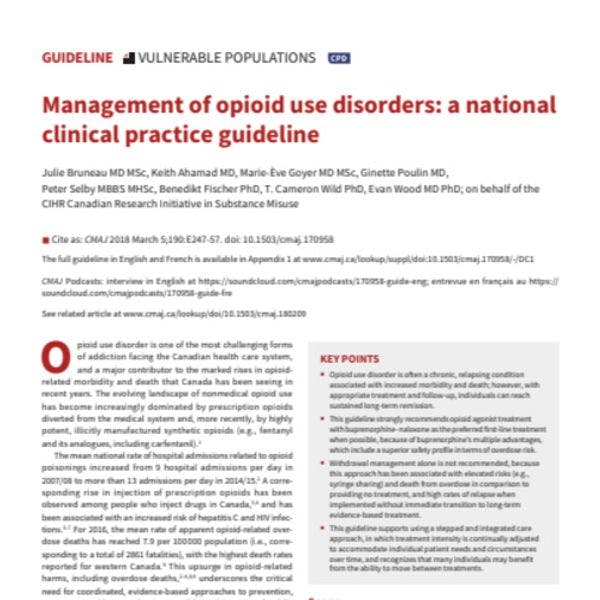Prise en charge des troubles liés à l’usage d’opioïdes : des lignes directrices nationales en pratique clinique
Cette directive offre un soutien en utilisant une approche par étape et intégrée, dans laquelle l’intensité du traitement est continuellement ajustée pour répondre aux besoins et aux situations individuelles des patients dans la durée. Pour en savoir plus, en Anglais, veuillez lire les informations ci-dessous.
• Opioid use disorder is often a chronic, relapsing condition associated with increased morbidity and death; however, with appropriate treatment and follow-up, individuals can reach sustained long-term remission.
• This guideline strongly recommends opioid agonist treatment with buprenorphine–naloxone as the preferred first-line treatment when possible, because of buprenorphine’s multiple advantages, which include a superior safety profile in terms of overdose risk.
• Withdrawal management alone is not recommended, because this approach has been associated with elevated risks (e.g., syringe sharing) and death from overdose in comparison to providing no treatment, and high rates of relapse when implemented without immediate transition to long-term evidence-based treatment.
• This guideline supports using a stepped and integrated care approach, in which treatment intensity is continually adjusted to accommodate individual patient needs and circumstances over time, and recognizes that many individuals may benefit from the ability to move between treatments.
Podcast
